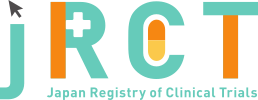臨床研究等提出・公開システム
|
Nov. 22, 2018 |
|
|
Dec. 22, 2023 |
|
|
jRCT2080224158 |
A Phase 1b, Open-Label, Dose-Escalation Study for the Safety, Tolerability, and Pharmacokinetics of INCB050465 in Japanese Subjects With Previously Treated B-Cell Lymphoma (CITADEL-111) |
|
A Study of INCB050465 in Japanese Subjects With Previously Treated B-Cell Lymphoma (CITADEL-111) |
|
Aug. 14, 2020 |
|
17 |
|
All participants were Japanese, and the majority were > 65 years old (58.8%) and female (64.7%). |
|
A total of 17 participants were enrolled and received at least 1 dose of parsaclisib monotherapy at 10 mg QD (n = 3) or 20 mg QD (n = 14) followed by the same dose once weekly. Six participants (35.3%) remained on treatment and 7 participants (41.2%) overall remained on study. |
|
TEAEs occurred in 100.0% of participants. |
|
No DLTs occurred at the 10 mg dose level: DLTs occurred in 2 of 14 participants at the 20 mg dose level during the dose expansion phase, and included Grade 3 febrile neutropenia and Grade 4 neutropenia in 1 participant each. The 20 mg dose level was determined not to have exceeded the MTD. No clinically meaningful trends in clinical chemistry or changes in vital signs, body weight, or ECGs occurred with parsaclisib administration. A majority of shifts from baseline to low neutrophil counts were to CTC Grade 1 or Grade 2. No clinically significant elevations in transaminases were noted during the study. After oral administration in the fasted state, parsaclisib plasma concentrations attained peak values (C max) typically at 0.55 to 1 hour (median Tmax) postdose, and subsequently exhibited a mono- or bi-exponential decay with a steady-state geometric mean terminal-phase disposition half-life (t1/2 1/2) of approximately 9.94 hours and a systemic accumulation ratio of approximately 1.3. Steady-state oral-dose clearance (C Lss / F) and volume of distribution (Vz / F) of parsaclisib were 2.18 plus or minus 0.723 L/h and 31.2 plus or minus 9.77 L, respectively. Body weight normalized CLss/F and body weight normalized Vz / F were comparable between Japanese participants in this study and US participants in study INCB 50465-101. The mean (range) percentage of parent compound excreted in urine as unchanged parsaclisib at steady-state over the 0 to 8 hour collection interval was 12.1% (5.4%-20.4%) following 10 mg and 20 mg QD administration combined, and the man plus or minus STD of the renal clearance was 0.432 plus or minus 0.171 L/h. |
|
The ORR for the 6 participants with DLBCL was 16.7% (95% CI: 0.42, 64.12). A single responder had PR/PMR as best overall response that was maintained at the last assessment.The ORR for the 9 participants with FL was 100.0% (95% CI: 66.37, 100.0), including 2 participants (22.2%) with CR/CMRs and 7 participants (77.8%) with PR/PMRs as best overall response.Two participants had CR/CMRs and 1 participant had PR/PMR as best overall response that was maintained at the last assessment.The ORR for the 2 participants with MZL was 100.0% (95% CI: 15.81, 100.0). Both participants had PR/PMRs as best overall response that was maintained at the last assessment . |
|
Parsaclisib was shown to be safe and tolerable in Japanese participants with relapsed or refractory B-cell malignancies at parsaclisib 20 mg QD for 8 weeks followed by the same dose once weekly. Parsaclisib was not associated with significant transaminase elevations or with any new or unexpected AEs in the Japanese population. Based on preliminary analyses, the PK profile of parsaclisib in Japanese participants is comparable to the profile in the US population and no dose modifications are recommended. |
|
Dec. 22, 2023 |
|
Yes |
|
Data will be made available at the end of trial or termination of trial. The following data will be made available: safety, PK and PD, efficacy, and subject characteristics. The results of the trial will be published. In addition, data as documented in study CSR will be made available upon request. |
|
| version: date:Sept. 07, 2022 |
Incyte Biosciences Japan G.K. |
||
Tokyo Midtown Hibiya 1-1-2 Yurakucho, Chiyoda-ku, Tokyo, Japan |
||
+81-120-094-139 |
||
jpmedinfo@incyte.com |
Incyte Biosciences Japan G.K. |
||
Tokyo Midtown Hibiya 1-1-2 Yurakucho, Chiyoda-ku, Tokyo, Japan |
||
+81-120-094-139 |
||
jpmedinfo@incyte.com |
completed |
Aug. 02, 2018 |
||
| 17 | ||
Interventional |
||
Intervention Model: Single Group Assignment Masking: None (Open Label) Primary Purpose: Treatment |
||
treatment purpose |
||
1 |
||
1) First generation Japanese; subject was born in Japan and has not lived outside of Japan for > 10 years, and subject can trace maternal and paternal Japanese ancestry. |
||
1) Evidence of transformed non-Hodgkin's lymphoma histologies. |
||
| 20age old over | ||
| No limit | ||
Both |
||
Lymphoma |
||
investigational material(s) |
||
safety |
||
efficacy |
||
| Incyte Corporation | |
| - |
| - | |
| - |
| National University Corporation Tohoku University Tohoku University Hospital Institutional Review Board | |
| 1-1 Seiryo-machi, Aoba-ku, Sendai-shi, Miyagi, Japan | |
- |
|
| - | |
| approved | |
May. 28, 2020 |
| NCT03314922 | |
| ClinicalTrials.gov |
| JapicCTI-184219 | |
| Japan |
